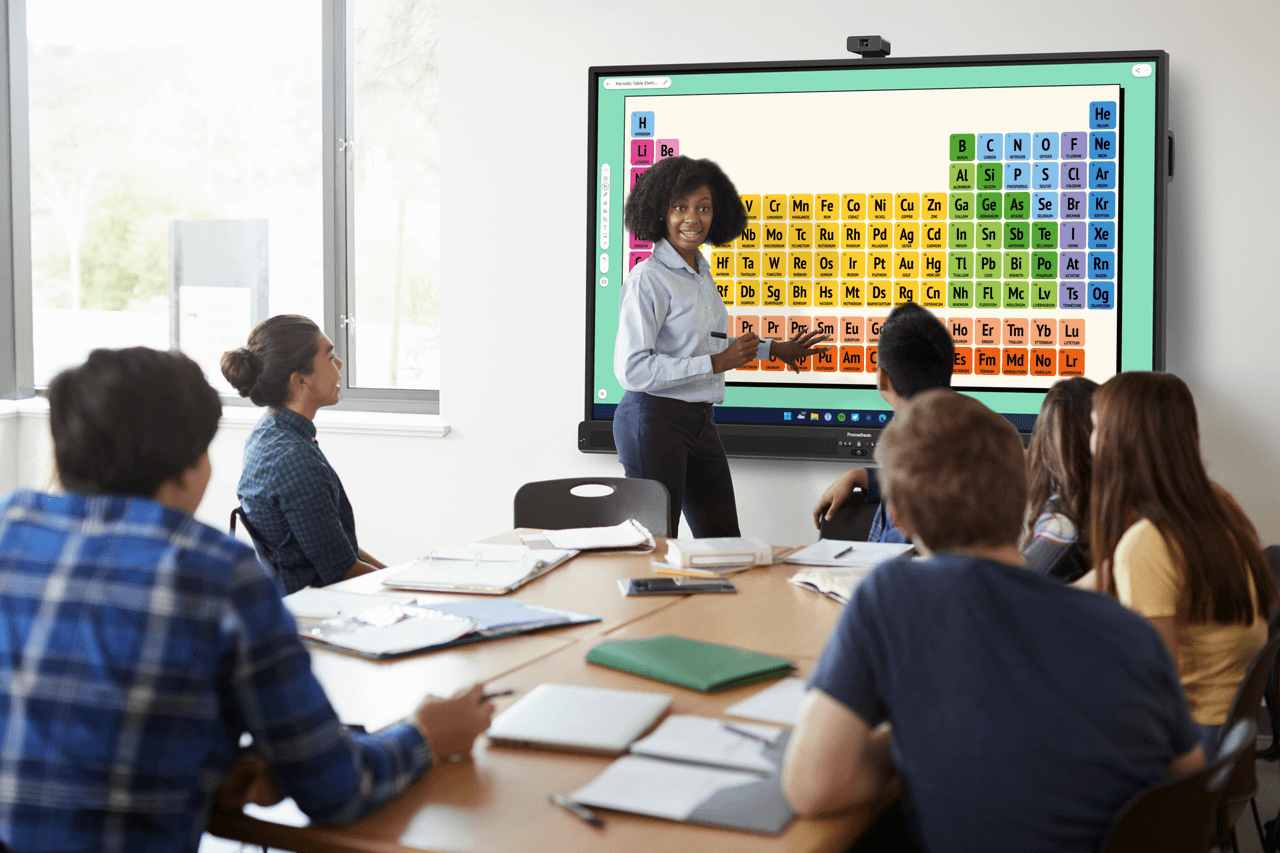Published on October 21st, 2022
What is auditory learning?
8 minute read

Students who retain information best by hearing or listening could be classified as auditory learners.
In 1987, Neil Flemming coined the acronym VARK to describe the main ways people learn. The acronym stands for visual, auditory, reading and writing, and kinesthetic.
Auditory learners retain new information best if they can listen to it in some way. This may look like repeating information to themselves, listening to an audiobook, or matching concepts to the melody of a song.
Auditory learning is a multifaceted learning style and includes a variety of different study methods. In this guide, we will look at the strengths and weaknesses of this learning style, how to help auditory learners excel in the classroom, and how to utilize your interactive display to support this learning style.
How to recognize an auditory learner
It’s easy to pick out auditory learners in a classroom: these children often sing songs to themselves and remember lyrics easily. Most children who would classify as auditory learners also prefer to read out loud, and you might even see them whispering to themselves as they read from a textbook.
They’ll often ask for directions to be repeated to them if they didn’t catch it the first time. Of course, not all auditory learners exhibit all of these characteristics, but they’re a great place to start.
Strengths and weaknesses of auditory learners
There are just as many benefits of auditory learning as there are obstacles. As a teacher, it’s important to highlight the strengths of auditory learners and to help them overcome the hurdles that this learning style presents.
Strengths
Some auditory learners can process and understand information they hear while doing other tasks. This might mean a student can listen to a lesson while taking notes or doodling.
Auditory learners have a lot of technological tools at their disposal. Voice recorders, audiobooks, podcasts, and recorded videos are just a few of the most common tools students can use to replay information in order to learn it.
Finally, since auditory learners learn when they hear themselves say the information, they learn while they help their peers. They are fantastic in group projects and thrive in small groups.
Weaknesses
There are also things that auditory learners struggle with in the classroom.
Children who learn auditorily can struggle with distraction. While sounds help them learn, sounds can also grab their attention away from what they are supposed to be learning. This is why headphones are so important for auditory learners. It’s also a good idea to keep the classroom door closed so that outside noises don’t filter in.
Unfortunately, auditory learners may disrupt other students. If they are whispering to themselves or singing a song to remember the facts, it might overwhelm students that need silence to focus.
It’s also a challenge to teach a mixed group of students when some of them learn by talking or singing and others need to read quietly to comprehend the information. In these situations, technology can be a huge help.
How to help auditory learners excel
When it comes to helping auditory learners succeed in the classroom, it’s important to try a variety of methods. As you present the information in creative ways, students will have a greater chance of learning retention.
Try any of the following teaching methods to help auditory students in your classroom.
Assign oral presentations and reports
Because auditory learners retain information by hearing it aloud, you can encourage students to create presentations and share them with the class. Allow them to use preloaded teaching tools on Promethean displays, like drawing on top of content or using a timer to keep them focused, and watch as your students become more engaged in learning.
The Promethean ActivPanel interactive display makes oral presentations fun and engaging, and most of all, interactive.
Record lessons
Since auditory learners will remember information more effectively if they hear it repeatedly, being able to record lessons is imperative. This allows the student to replay the lesson/ material while the teacher is free to help other students.
Promethean interactive displays have a feature that allows teachers to record lessons and send them to students through various channels.
You can even record lessons separately and give them to the students that need them. This is a wonderful way to give your students an extra tool in their educational toolbox.
Incorporate social elements into lesson plans
When auditory learners interact with lessons in a social way, they will be more likely to remember the information. There are a lot of different ways to encourage the entire class to participate in learning together thanks to education technology.
The seamless Vellum writing technology on the ActivPanel allows teachers to hand-write notes from the students directly on the display screen with no lag time.
Screen mirroring is another really fun feature in ActivPanel displays. Students don’t have to crowd around the board anymore. Now, they can sit at their desk, see the images mirrored on their tablets, and participate in the lessons at the same time.
Promethean: Helping auditory learners excel and engage
When it comes to auditory learners, sounds are the most important feature in the lessons. Verbal, non-verbal, and their own spoken words can all impact how many concepts they retain from the daily lessons.
It’s important to give these learners access to technology that helps them succeed. ActivPanel smart displays have the features that provide auditory learners with the tools they need to learn and succeed in the classroom.
Want to see it in action? Request your free ActivPanel live demo from Promethean today!




